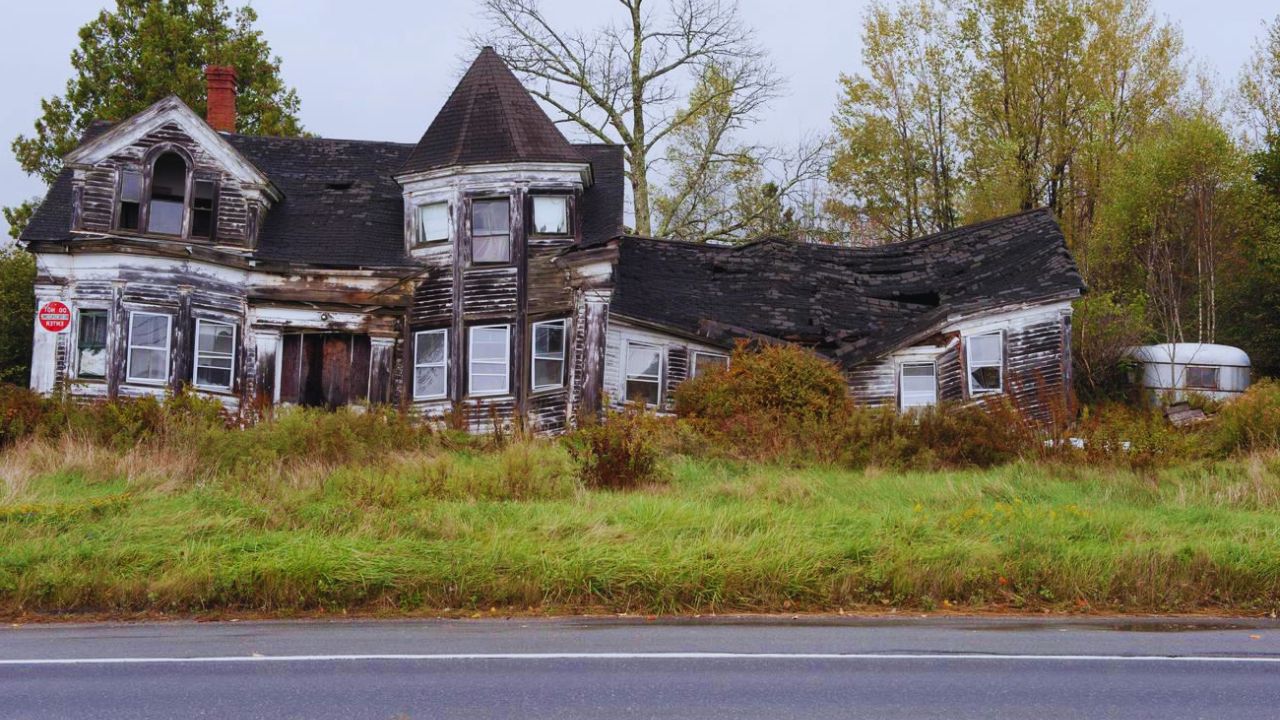Owning a home is a significant responsibility beyond simply paying the mortgage. Regular maintenance and timely repairs are essential to ensure your home remains safe, comfortable, and in good condition.
Ignoring seemingly minor issues can lead to more significant problems and costly repairs. Here are 15 home issues you should promptly address to keep your home in shape.
1. Critters
Finding ants on your countertops or mouse droppings in your HVAC grilles is more than just an inconvenience—it’s a sign that pests have found their way into your home. Common entry points include exhaust vents, condensate lines, pipes, ducts, utility access panels, and garage doors.
Look for gaps, signs of chewing or nesting, and ripped screening. Pests, especially mouse and bird droppings, can cause damage and pose health risks.
If you’re unsure how to handle the problem, it’s best to call a professional exterminator to ensure your home is pest-free. Regular inspection and sealing of entry points can prevent future infestations.
2. Mold
Mold thrives in damp environments, and while it’s common in areas like bathrooms and kitchens, finding it elsewhere in your home is a cause for concern. Mold can lead to serious health issues and structural damage.
If you discover mold, hire an inspector certified by the American Board of Industrial Hygiene or the American Council for Accredited Certification. They can determine whether you can clean it up yourself or if you need a professional remediation company.
Proper ventilation and addressing leaks are crucial to preventing mold growth. Mold prevention also includes regular cleaning and the use of dehumidifiers in high-humidity areas.
3. Sagging, Buckling, or Warped Floors
A sagging floor might seem minor, but it can indicate significant problems. Water damage from a leaking toilet or sink can cause the subfloor to rot while missing structural supports can lead to serious stability issues.
Inspect your basement or crawlspace to identify the cause of the sagging. If you suspect structural problems, consult a home inspector or engineer to assess the situation and recommend the necessary repairs.
Addressing these issues promptly can prevent further damage and ensure your home’s stability. Regular monitoring of your floors can help detect problems early.
4. Standing Water in the Yard
Water pooling in your yard after rain indicates poor drainage, leading to moisture problems in your basement or crawlspace. Heavy, compacted soils or improper grading often cause this issue.
Solutions include installing a French drain or re-grading the property to improve drainage. Addressing drainage problems can prevent water damage to your home’s foundation and avoid creating a breeding ground for mosquitoes and algae.
Proper yard maintenance, including regular debris clearing and adequate soil aeration, can enhance drainage.
5. Missing or Damaged Roof Shingles
Your roof is your home’s first defense against the elements, so regular inspections are crucial. Missing or damaged shingles can expose the underlying wood sheathing to moisture, leading to costly repairs.
If you’re handy, you can replace damaged shingles, but extensive damage requires professional attention. Keeping your roof in good condition prevents leaks and protects your home from weather-related damage.
Regularly cleaning gutters and removing debris can extend the life of your shingles and avoid water damage.
6. Scary Sounds From the HVAC
Your heating and air conditioning system may make some noise, but loud, unusual sounds like banging, thumping, or squealing indicate problems. Issues with belts, the blower motor, or the compressor can cause these noises.
Regular maintenance and prompt repairs by an HVAC technician can prevent system failures and ensure efficient operation. Don’t forget to schedule bi-annual checkups to keep your HVAC system running smoothly.
Ensuring proper ventilation and replacing filters regularly can also enhance HVAC efficiency and longevity.
7. Plants Encroaching on Your Roof or Walls
Shrubs and trees planted too close to your home can trap moisture, damage siding, and fill gutters with debris. Ensure plants and air conditioning units are at least three feet away from the house to allow for proper airflow and sunlight exposure.
Regular pruning prevents plants from rubbing against your home and reduces the need for frequent repainting.
Climbing vines, while attractive, can damage wood siding and mortar, so choose twining vines that use a trellis rather than those that cling to your home’s surface. Proper landscaping not only protects your home but also enhances its curb appeal.
8. Smelly or Gurgling Drains
Unpleasant smells or noises from your drains can indicate a blockage. A blockage may cause a gurgling sound you can remove with a snake or plunger.
If a sink smells terrible but isn’t used frequently, the water in the U-shaped pipe may have dried out, allowing methane gas into the room.
Pour a quart of water down the drain and air out the room. If the smell persists, call a plumber to investigate a possible blockage in the vent pipe. Regularly cleaning and maintaining your drains can prevent such issues.
9. Condensation on Basement Pipes
Warm, moist air condensing on cool basement pipes can cause dripping and raise the humidity level, increasing the risk of mold growth. To reduce condensation, ensure all vents to the outside are closed and add foam pipe insulation to accessible pipes.
Keeping humidity levels in check is essential for maintaining a healthy indoor environment. Additionally, consider using a dehumidifier in your basement to reduce moisture levels. Properly sealing windows and doors can also help maintain appropriate humidity levels.
10. Sagging Roofline
A sagging roofline, especially in older homes, can indicate serious structural problems such as broken sheathing or loose connections.
Regularly inspect your attic to spot new issues early. If you notice significant sagging, consult a professional to determine if repairs are needed. Addressing roofline issues can prevent further damage and ensure your home’s structural integrity.
Keeping your roof clean and free of heavy debris like snow and leaves can prevent sagging. Regular professional roof inspections can catch potential problems before they become significant issues.
11. Dripping Faucets
Leaking faucets may seem minor, but they can waste significant water and lead to higher utility bills. Regularly check the cabinets under your sinks for leaks, including kitchen spray wands that can leak down the tubing.
Fixing a dripping faucet is usually a simple repair that can save water and reduce utility bills. Don’t forget to check outdoor faucets and hoses for leaks as well. Regular maintenance of faucet seals and washers can prevent drips and leaks.
12. Poorly Built Decks
A wobbly or shaky deck can be dangerous, especially when hosting gatherings. Check the deck’s attachment to the house to ensure it’s secured with lag bolts or screw bolts to a sturdy ledgerboard.
If needed, replace 4×4 posts with stronger 6×6 or 8×8 posts, and install angle braces to reduce movement. If you’re unsure about the deck’s safety, call a reputable contractor for an inspection and repairs.
Ensuring your deck is structurally sound can prevent accidents and injuries. Regularly staining and sealing your deck can protect the wood and enhance its durability.
13. Shaky Stair Railings
A wobbly stair railing is a safety hazard, particularly if you have children. A stair railing should resist a force of about 200 pounds. If a railing shakes quickly, you may be able to tighten it yourself, but more extended railings or those with balconies may require professional attention.
Ensuring sturdy railings can prevent accidents and injuries, providing peace of mind for your family’s safety. Regularly inspecting and maintaining stair railings can ensure their stability and safety.
14. Asbestos
Homes over 50 years old with radiator or steam heat in the basement may have asbestos pipe insulation. If you suspect asbestos, don’t touch it. Instead, get it inspected by a licensed asbestos abatement contractor.
Asbestos removal is not a DIY project and should be handled by professionals to avoid health risks. Properly addressing asbestos can prevent exposure to harmful fibers and protect your family’s health. Regular inspections for asbestos in older homes can ensure a safe living environment.
15. Peeling Paint
Peeling paint on the exterior of your home can lead to wood damage from sun and water exposure. Scrape down to bare wood, prime, and apply new paint. For interior paint, peeling in rough squares may indicate lead-based paint underneath.
If the area is extensive or you have small children, consult a professional for safe removal. Properly maintaining painted surfaces protects your home from further damage and keeps it looking its best.
Regularly painting and sealing exterior surfaces can protect your home from the elements and enhance its appearance.
Final thoughts
Proactively addressing these common home issues can save time and money and prevent more severe damage. Regular maintenance and timely repairs are essential for keeping your home in good condition and ensuring a safe, comfortable living environment.
If you notice any of these problems, take action promptly to maintain the integrity and value of your home. Regular inspections, preventive measures, and professional help when needed can go a long way in preserving your home and providing peace of mind.





































